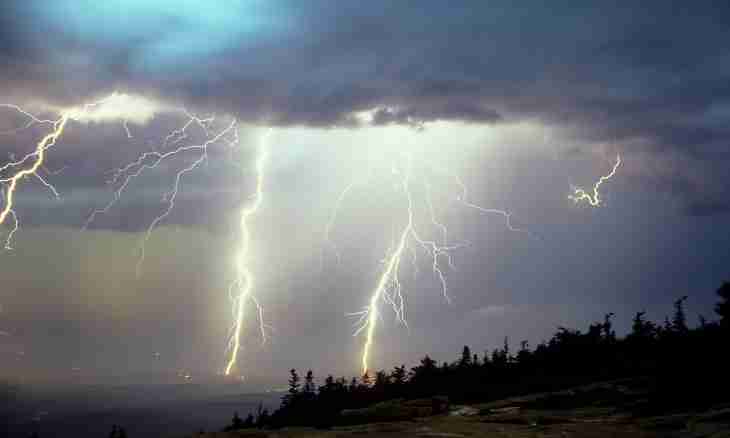Thunderstorms — the bright and fascinating atmospheric phenomenon. In midlatitudes they happen about 10-15 times within a year, in close proximity to the equator on the land – from 80 to 160 days in a year are storm. Over oceans they occur much less often. Thunderstorms are satellites of atmospheric fronts at which there is a replacement of warm air masses by cold.
The thunderstorm begins with a huge air column which forms quickly inflating high white cloud. Storm clouds are the real giants, their size can reach 10 km. Its lower part – flat, but it sharply is distributed up and on sides.
When the upper bound of such cloud giant reaches a stratosphere, it begins to be flattened and takes the form of a peculiar anvil. The sudden gale-force wind sometimes passing into a squall begins. Storm squalls are capable to cause serious destructions. There were cases when they overturned railway cars weighing more than 16 tons. The most terrible thunderstorms happen to squalls usually in warm season.
The lightning represents the most powerful electric discharge in air arising between two storm clouds or between a cloud and the Earth's surface. Force of such charge is huge therefore air around a lightning instantly heats up to very high temperature and sharply extends. Such expansion is resulted by the strongest sound wave which is called a thunder. Repeated and powerful lightning discharges can form a long roar and noise. It occurs because the sound wave is reflected from clouds, the Earth's surface, buildings and other objects, creating repeated an echo and extending thunder peals. The flash of a lightning extends in air at the speed of light therefore it is visible practically right after the category, and the roar of the extending air masses flies by one kilometer on average in 3 seconds. If the lightning and a thunder follow one after another continuously, one may say, that the thunderstorm occurs nearby. If lightning flashes considerably advance thunder peals, then the thunderstorm is at a certain distance from the observer. Respectively, the thunderstorm is farther, the thunder peals after a lightning are longer not heard.
